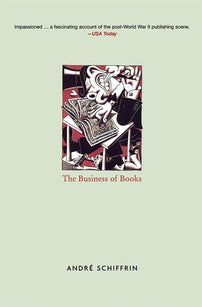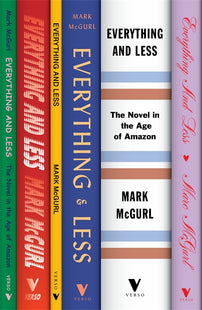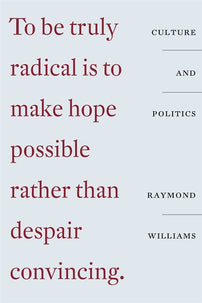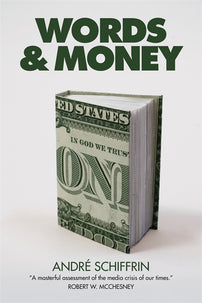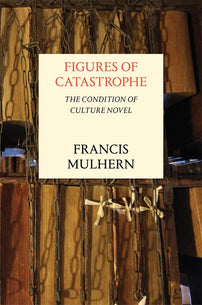Bad Nostalgia
The book publishing industry is in crisis, so why is it so hard to talk about the labour that goes into making books?

Early on in my career in publishing, an agent outlined the rules of comparative titles to me. “Comp” titles, as they are known in the industry, are a part of a process by which publishers assess the commercial viability of a book by comparing it to past successes. These comps, the editor explained, must be recent works, generally from the last five years, that generated buzz and sold relatively well (a variable number depending on genre and publishing house). Comps mainly exist for the benefits of sales teams, both internal and external, enabling them to coordinate plans for marketing and publicity, and otherwise assist in finding a place for the book in the market.
The process can be a useful one, but the practice also enforces a kind of conservatism on the industry, relying on vague similarities to fit a book into the literary status quo. To say a book is “like Sally Rooney” is to gesture more to its thematic content or its anticipated reception (sad girl literature, interpersonal relationships, somewhere between literary fiction and beach read) than anything more substantive. Comping can also create strange translation binds; in Europe, where most narrative nonfiction is shelved as fiction, narrative books that defy that category present a logistical difficulty: where do you put them?
An obvious solution is to fudge your comps—which, rest assured, everyone is doing. Grandiose and fantastical comparisons to Ottessa Moshfegh or Jonathan Franzen routinely find their way onto publication plans for debut novels, often based on little more than an effort to whip up buzz. This deception is reinforced by the opaque nature of the publishing industry and its interpersonal networks: agents will drum up hype for their books over expensive drinks and lunches, with the hope of spinning modest debut novels into high six-figure sales at auction. One editor might be able to access such an advance at an imprint where other editors are not, either due to favoritism within the house or their ability—real or perceived—to spot a winning title. At times, these differences become generational battlegrounds: young editors are often tasked with explaining to their older, incredulous bosses why a book by a wildly popular “girl blogger” will succeed. “Diverse” imprints, aimed at non-white readers, tend to open and shutter with alarming speed as their corporate superiors’ dither on the viability of these readerships and markets. Some imprints rely on their moneymakers, often genre or children’s fiction, to be able to take losses on prestige literary prizewinners.
Despite the occasional glimpse of innovation or progress, this system retains its traditionalism. In a November 2023 interview with the New York Times Magazine, celebrity agent Andrew Wylie claimed that the “dominance of the delivery systems” like Amazon and Barnes & Noble has for years led publishers to devote disproportionate resources to the books that end up on the bestseller list. Amazon in particular is known to negotiate elaborate deals with publishers who want their books aggressively recommended by the company’s algorithms. BookScan, the industry-standard service for point of sales data, collects most of its data from Amazon and the major retailers, with the odd result that it is often hard to say exactly how many copies a book has really sold.
[book-strip index="1"]
It is bewildering that a system which ostensibly exists to generate and distribute creative work should be so incapable of incorporating experimentation and originality. A range of theories have been developed to explain this state of things, each offering their own ideas as to how the publishing industry became so stagnant. Some point to MFA programs to explain the industry’s homogeneity and the codification of “literary fiction” as a genre. In The Program Era, an academic survey of creative writing, Mark McGurl contends that since the creation of the Iowa Writers Workshop in the 1950s, the MFA program has been the single most defining force in contemporary fiction. Chad Harbach, meanwhile, in his much-debated 2010 essay “MFA vs. NYC,” argued that a rough split has occurred within the writing community between those pursuing post-MFA academic careers, whose work is oriented towards a more insular and experimental canon, and those pursuing big publishing deals in New York. In a slightly different camp, the academic Dan Sinykin recently blamed the current conservatism on the rise of conglomerate publishing and its attendant financial structures, while Alex Perez and a growing class of right wing authors see an emerging racial and gendered homogeneity as the root of the literary world’s staleness and its resistance to creative innovation. Yet each of these theories focus on the final output of the industry—the contents of published works and their aesthetic properties—while concerns about labor, the animating force that drives publishing, largely fall by the wayside.
What would it mean to interrogate labor as the engine behind conglomerate publishing and the core of its systemic failure? Producing creative work, after all, is labor, as is the process of selling, editing, and marketing it. In an industry that has been consistently hostile to labor organizing within its ranks, the work that goes into the making and publishing of books is often viewed merely as a “labor of love.” Young publishing workers, coming up in the industry, are expected to view their remuneration as incidental to the job, and discouraged from advocating for higher salaries or wage transparency. Against this, criticism of contemporary publishing tends to romanticize the older pre-conglomerate era, an age when editors really edited and literature was revered. But if you hang around that generation of older editors, agents, and scouts, sooner or later they will tell you that you don’t work in publishing for money. In fact, thinking too much about money at all is treated like a fatal character flaw.
***
Dan Sinykin’s new book, Big Fiction: How Conglomeration Changed the Publishing Industry and American Literature, a history of the rise of conglomerate publishing, tracks the emergence of a new type of neo-literary novel in the 1990s that prized readability, and often drew on elements of genre fiction to make itself more digestible for a mass audience. For Sinykin, this type of novel is inextricable from the era of conglomeration, which has radically transformed a writer’s relationship to their work. Beginning in the 1970s, publishing houses, mostly small and family-owned, were consolidated into large corporations governed by intense financial incentives. To act as middlemen to this new system, literary agents gained a newly central role, thus driving up the cost of book acquisitions and their competitiveness, while marketing and sales departments became more involved in a book’s production process. It was also the era of the rise of wholesale distribution, reshaping what it looked like for a book to be commercially viable or successful, and the channels by which it was sold. Where once the traditional author/editor relationship, formalized over the first half of the 20th century, was sacrosanct, today books must work their way through agents who sell their books to publishing houses where it is formed into a product by an increasing number of people – not only by the editor, but also the growing sales and marketing teams. What this is, in effect, is a process of commodification, whereby a book becomes a product. In the pervasive nostalgic narratives that surround this development, the pre-conglomerate era is often described within the industry as a kind of golden age for literature and a purer time for art. Where a book used to simply be bought and edited, now, through packaging, marketing, and branding, it stops being a work of art or even a story in the pure sense and becomes something else entirely.
Yet Sinykin largely eschews the term “commodification” in favor of more mystifying terms like “conglomerate authorship.” This is presumably because his main aim is not to sketch an economic history of publishing but to do a kind of literary sociology where he excavates from various novels the process by which they were shaped by the rise of conglomeration. While Sinykin therefore withholds explicit value judgements about whether the context of conglomerate publishing has made literature “better” or “worse” overall, his opinions bleed through the text nonetheless. Literature, in his view, has become less weird, less distinctive, less original, and less literary, for lack of a better term, over recent decades.
But this approach to literary criticism leaves us in a strange no man’s land between formal critique and sociology. In a more labor-focused book, the stakes of conglomeration would be brought more clearly into focus, particularly the impact it has had on publishing workers, who are increasingly overworked and underpaid, and on writers, whose work rarely pays the bills. Likewise, in a work of pure literary criticism the value of conglomeration would lie precisely in a judgment about whether the literature it produced has been better or worse than what went before. Elif Batuman’s famous London Review of Books polemic against McGurl’s The Program Era fixates precisely on this point. For Batuman, MFA programs and their codification of “literary fiction” has made modern writing unbearably dull and risk averse. “All that great writing,” she writes, “trapped in mediocre books!” Sinykin treads the line between these two approaches, a balancing act that rarely pays off. The books he discusses, which range from works by Cormac McCarthy and Toni Morrison, to Stephen King and Danielle Steele, are often instrumentalized as mere citations in support of his argument.
One of Sinykin’s overarching contentions is that the rise of autofiction as a literary style was a product of the material constraints of the conglomerate era. Just as conglomeration was stripping authors of the ownership of their work and forcing them to become brands, the genre of autofiction began to explode in popularity. Autofiction is therefore a kind of ironic self-defense, a way of reclaiming selfhood from the corporation, as well as a perfect vehicle for corporate marketing. While Sinykin acknowledges that the practice of autofiction—writing about yourself in fictionalized form—is longstanding, still he sees contemporary autofiction as a new genre. In Sinykin’s view, pioneers of the form like Elizabeth Hardwick, Renata Adler, and Alison Lurie were writing in order to reclaim their power from a misogynistic industry (all three were New York-based or New York-adjacent writers, with deep ties to the publishing industry) that treated them as unserious. This lineage is then traced through the work of Chris Kraus, Maggie Nelson, and Kate Zambreno, writers from the new tradition, who have published works that explicitly examines their own labor and identity as women and as writers.
But while Kraus, Nelson, and Zambreno all write self-consciously about a literary world that has sidelined or objectified them, they are all also products of an ecosystem of independent publishing: Kraus and Zambreno first published with Semiotext(e), while Nelson began with Wave Books before moving to Graywolf. Even if the pressures of conglomerate authorship extend beyond writers publishing with conglomerate houses, as Sinykin contends, squeezing all writers, including those who actively choose not to live in New York or to publish with conglomerate houses (the MFA writers, in Harbach’s theory), what Sinykin is identifying is a lineage of writers who write about how it is to be both a woman and a writer. And while Adler, Hardwick, and Lurie all confront this paradigm, it is hardly original to them.
[book-strip index="2"]
That doesn’t stop literary novels by women being marketed in this vein. Reissued classics by writers from Joan Didion and Sylvia Plath to Jane Austen and Emily Brontë have been packaged in sleek feminine editions that would fit in a fashionable TikTok feed. Sinykin’s leap is in extending this marketing practice, and the acquisitions decisions that have led to a proliferation of such books, into a truism about women’s writing and identification within the literary industry. As such, his analysis of Toni Morrison’s Beloved, which runs along similar lines, has been criticized in both The New Yorker and The Atlantic for reducing Morrison’s novel to an allegory about her vexed career at Random House. For evidence of this, he draws upon the preface of the book, where Morrison describes the ecstasy of leaving publishing, directly after which she wrote what was to become her most commercially successful novel and which, according to Sinykin, capitalized on the trend for horror novels begun a few years earlier by Stephen King.
Of course, Morrison described her experience of racism at Random House and the feeling of liberation she experienced when she left, and Beloved is also a story about racism and the experience of emancipation. But to claim that Morrison was straightforwardly allegorizing her own life merely because her phrasing is similar is to ascribe a kind of naivete to her that strains credulity. Haunting, after all, is a persistent theme in Black American storytelling, as is horror. Both appear in Russian literature, for instance, which Morrison loved, and also in Latin American literature where writers like Gabriel García Marquez dissolved the boundaries between the rationally described Western world and a mirror world of horror and violence inflicted upon colonized people, the shifting space between life and death. To narrowly follow the guidelines of highbrow American literary fiction and what is considered realist or non-realist seems like a parochial mistake. Sinykin, perhaps unintentionally, replicates the very genre categories he is attempting to criticise.
***
Above all, Big Fiction feels like a missed opportunity to write a labor history of publishing. Some of the biggest losers of the conglomerate era are young editors, who face increasingly unrealistic pressure to sell books while being stonewalled by higher-ups. The road to promotion is arduous, and yearly salary increases at most of the big corporate houses remain minute, leading to what has been termed an “editorial drain” within the industry. In France, where conglomeration has advanced rapidly in recent years following the acquisition of the Lagardère Group (the parent company of Hachette) by media mega-corporation Vivendi, there has been a sudden surge of editors or rights directors becoming literary agents, previously a marginal aspect of the French industry. It is quite simply easier to make money as an agent if you are successful; agents are at least guaranteed a cut of the profits.
In 2022, a young assistant editor working at Tor, an imprint of Macmillan posted her resignation letter on Twitter. Molly McGhee had been responsible for acquiring The Atlas Six, an originally self-published fantasy novel by Olivie Blake that became a BookTok sensation. Upon publication by Macmillan, it debuted at number three on the New York Times bestseller list—the kind of success many editors spend their careers chasing. Despite this, McGhee, the resignation letter claimed, had been denied a promotion, and her workload, both acquiring for her own list and doing full time admin work for the editor she assisted, was unsustainable. There’s nothing unusual in this situation. I know several young editors who had quickly achieved all the usual markers of success but became stuck as permanent assistants, many for up to six years or more. Several others left the industry in frustration when they couldn’t get off a desk or make a living wage. In my own case, I left the industry late in 2023 when it became clear that I would continue to do assistant work for the foreseeable future despite having been promoted past assistant level.
Sinykin mentions young editors only in passing. He looks at the editors identified by rising stars in Publishers Weekly between 2018 and 2021 and concludes from their self-descriptions the kind of things that characterize millennial editors (an interest in diversity, for instance). The only one he names is Danny Vazquez, who left FSG for Astra House in the summer of 2020, a move that Sinykin chalks up to Astra’s focus on world literature and translation. He does not mention that Vazquez went from being an assistant editor at FSG to a senior editor at Astra, or that, according to data from a public salary sharing spreadsheet, he took a significant pay raise in the move, the kind of raise that it would likely have taken him years to achieve at Macmillan, FSG’s parent company.
For young editors and agents like McGhee, struggling to get a foothold in the industry, turning to mass market and genre fiction often gives them the stability and credentials to work on other, less commercially viable projects. Picking up already written and self-published books, often with a large and already existing following, significantly reduces the risks inherent to publishing new work. Of course, this is itself a byproduct of conglomeration and the financial pressures it exerts on workers and writers.
***
Sinykin is at times remarkably credulous of the reasoning the industry uses to describe itself, its odd and specific lexicon of rationalizations, its conflation of the terminology of writing and marketing. One of the case studies in Big Fiction is the work of the wildly successful Romance novelist Danielle Steel. “Her insistence on the myth of the romantic author” he writes, “reveals a certain naïveté, a willed ignorance of the compromises of adulthood, covering her eyes so as not to see the industry of which she is a product.” But Steel is, as Sinykin takes pains to point out, a brand as much as she is a writer. Taking at face value her public insistence that she writes her own books—up to seven a year—is its own kind of naïveté. If the romantic author is what the public craves, if they wish to ascribe furious inspiration to formulaic mass market romance, why should Danielle Steel deny them that? On the contrary, staying in character, never breaking the rules of her brand, seems both shrewd and calculated.
Sinykin is not the only writer to accuse the publishing industry of naïveté. In a 2022 interview with online literary magazine Hobart, the Iowa Writers Workshop graduate Alex Perez described his experience of having a novel out on submission nearly a decade earlier, a book that never sold, a failure that Perez attributes to the fact that the editors it was sent to were white women who were put off by “the book’s urban male sensibility.” “These were sweet white ladies from Oberlin College” Perez writes, “who never interact with uneducated brown people, so I get their distress.” Although a lot of what Perez said about the industry’s pervasive whiteness and its insincere obsession with diverse writers is undoubtedly true, his criticism is larded with culture wars terminology. The literary world, he claims, is dominated by “wokeness,” and caters exclusively to women and their sensibilities.
I respect how these passive aggressive prude ladies took over an industry…These women, perhaps the least diverse collection of people on the planet, decide who is worthy or unworthy of literary representation. Their worldview trickles down to the small journals, too, which are mostly run by woke young women or bored middle-aged housewives. This explains why everything reads and sounds the same, from major publishing houses to vanity zines with a readership of fifteen. The progressive/woke orthodoxy is the ideology that controls the entire publishing apparatus.
What is interesting about the interview—the publication of which led to the resignation of almost the entire Hobart staff—is how Perez dabbles in the same kind of nostalgia you encounter within the walls of a highbrow publishing imprint or literary magazine. He gushes about the Iowa Writers Workshop, which he attended before “wokeness” took hold there, and where he got into the writing of Raymond Carver, Denis Johnson, Richard Ford, O’Connor, and the rest of the MFA canon. He gestures at an imagined literary world of days gone by when men could be men without having to cater to the dull and uptight sensibilities of women.
This concern was echoed by publishing insiders in a Guardian essay, “How women conquered the world of fiction,” which included quotes from an unnamed male UK agent that complained that all the editors he submits to are women who suffer from “groupthink.” Sharmaine Lovegrove, the founder of Dialogue Books, a Hachette division created to promote marginalized writers, repeats Perez’s idea that it is easier to get traction for a “diverse” writer than it is to get traction for say, a white working-class man. They all agree that it has made publishing more timid, less interesting, less prestigious. Somehow, the argument goes, the encroachment of (white) women authors upon the genre known as literary fiction has transformed it from a form capable of genius and complexity to a kind of solipsistic reflection on middle-class masochistic feminine identity.
[book-strip index="3"]
Wherever this argument is repeated, it tends almost universally to look backwards to a lost golden age. It is steeped in nostalgia. Drawing on a wealth of digital humanities research, the academic Sarah Brouillette points out that “work in publishing is being transformed – becoming less prestigious and associated more with women’s work, with the commercial and with consumption.” Although women are overrepresented in publishing and novel writing as a whole, they remain heavily concentrated in less prestigious areas like romance, “women’s fiction,” “book club fiction,” and YA and children’s books.
This is not new. In many ways, it is a return to an earlier state of things. In the 18th and 19th centuries, novels, a frivolous form of entertainment, were equally associated with women. In Northanger Abbey, a satire of Gothic romance and the notion that it overexcites the imagination of young women, Jane Austen launched a famous defense of novels. “And while the abilities of the nine-hundredth abridger of the History of England,” she writes, “or of the man who collects and publishes in a volume some dozen lines of Milton, Pope, and Prior, with a paper from The Spectator, and a chapter from Sterne, are eulogized by a thousand pens – there seems almost a general wish of decrying the capacity and undervaluing the labour of the novelist.”
Set against this longer historical lens, the moment of masculine dominated realist novels and the prestige vehicle around them is almost vanishingly brief. It attracts outsized levels of nostalgia compared to its real significance in literary history. It was built on a deeply unequal and undesirable structure, which openly espoused an elitism, misogyny, racism, conservatism, and snobbery of various kinds. Turning to this past in search of less stifled and restrictive literary structures, the kind that could foster real experimentation and originality, is anathema to any more liberatory vision, to institutional breakdown. “Why,” wonders Elisabeth Nicula in a recent essay for Small Press Traffic, “should we entertain the conventions built up around art that require it to be fundamentally exceptional, credentialed, and toothless?” What benefit, you might wonder, looking at the state of contemporary publishing, do workers and writers really accrue from upholding those institutions and their flawed notions of what constitutes worthwhile literature, of how it should be distributed and delivered to the world?
The conglomerate era may be facing a different kind of breakdown, regardless. As this essay was being written, Nina Von Moltke, Don Weisberg, and Madeline McIntosh, three former executives from Macmillan and Penguin Random House, announced their new venture, a hybrid publishing house called Authors Equity. The founders do not describe it as hybrid publishing, but it is hard to see it as anything else. Instead of advances, the publisher will use a form of profit sharing to guarantee authors are only paid once they make enough money for the house. The editing, marketing, and publicity teams will be chosen from a stable of freelancers, essentially working for hire for the author and their corporate overlords.
In face of this kind of deregulated workforce, it is tempting to defend the structures of traditional publishing. Advances, after all, exist to sustain authors, and editors ideally grow and cultivate their lists and their relationships with their writers over many decades. But in reality, the old boutique model, its conglomerate successor, and this brave new world of dressed-up self-publishing, all share a common disregard for labor as the bedrock on which creativity is built. The only way forward for literature is a robust labor movement and a real exploration of what the novel might look like freed from the shackles of convention and commodification.
Miriam Gordis is a writer living in New York. Her work has appeared or is forthcoming in Guernica, The Drift, The New Inquiry, Verso, Hobart, and The Cleveland Review of Books. She studied at the University of Oxford and the CUNY Graduate Center, and she is a bookseller and former literary scout. She runs a newsletter about culture called Small Wire.
[book-strip index="4"]
